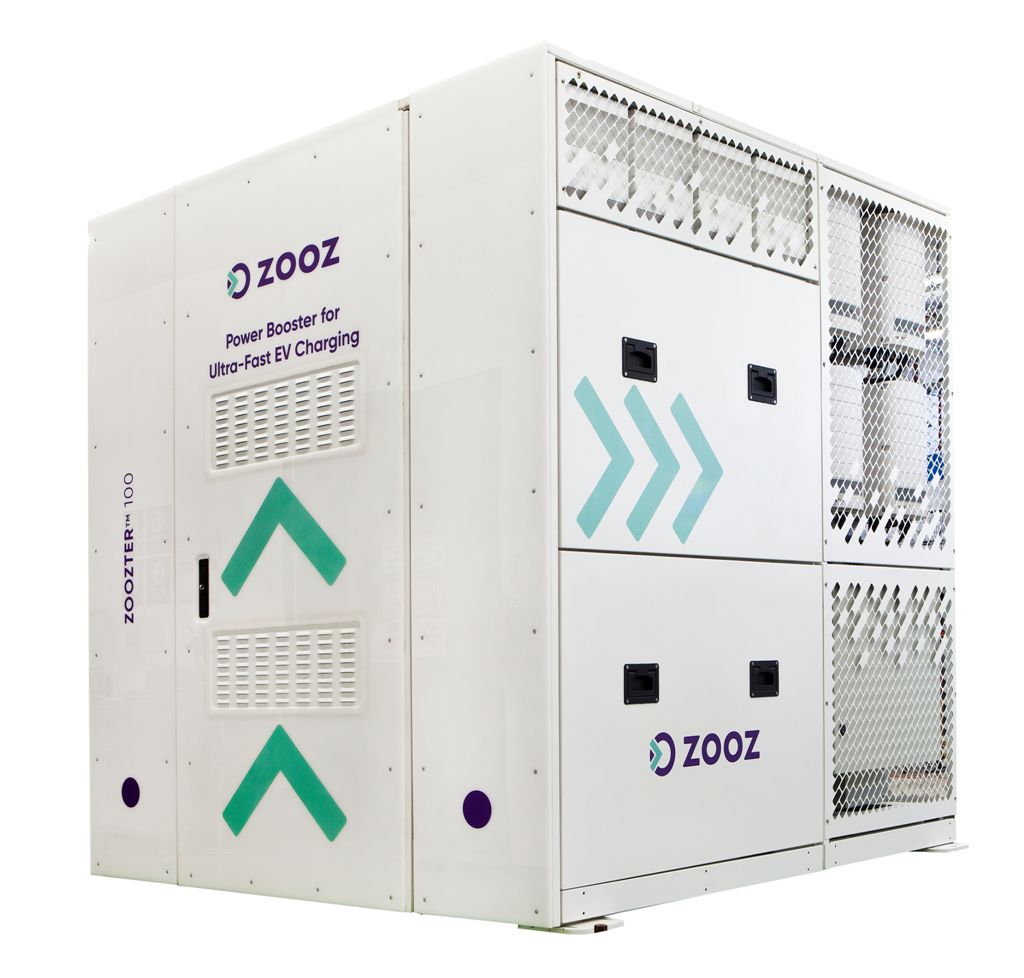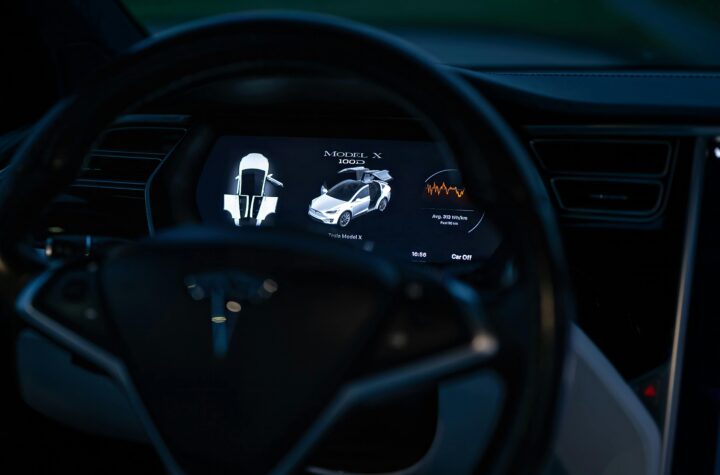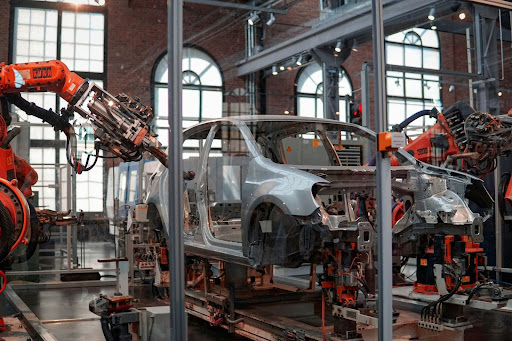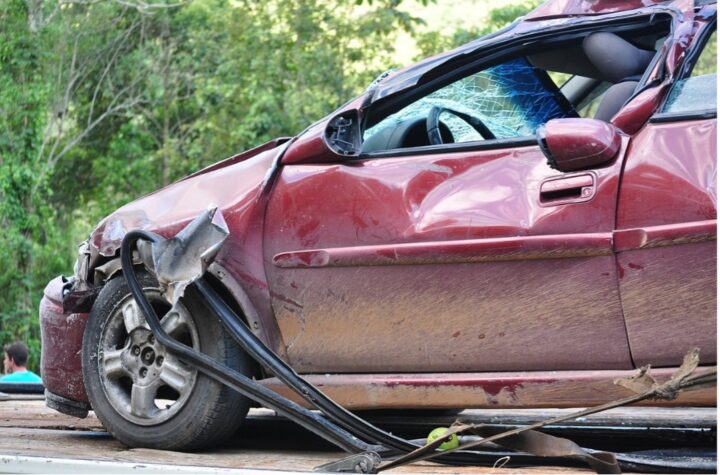
Automotive Industries interview with Udi Tzuri, VP Product & Marketing, ZOOZ Power
In this exclusive interview with Automotive Industries, Udi Tzuri, VP of Product and Marketing at ZOOZ Power, delves into the transformative potential of ZOOZ Power’s flywheel-based power boosters in revolutionizing ultra-fast electric vehicle (EV) charging. ZOOZ Power’s innovative technology offers a groundbreaking solution to the limitations of existing power grids, enabling rapid EV charging without the need for costly infrastructure upgrades. Tzuri outlines the operational mechanics of their flagship product, the ZOOZTER-100, and highlights its successful deployment, particularly at the Dor-Alon station on Israel’s Route 6. This conversation also explores the benefits of ZOOZ Power’s Energy Management System (EMS) and future advancements aimed at enhancing the EV charging experience and infrastructure.
ZOOZ Power, , has introduced the ZOOZTER-100, a flywheel-based power booster designed to facilitate ultra-fast EV charging even in areas with limited grid capacity. The ZOOZTER-100 stores energy in a high-speed steel flywheel that spins at 17,000 rpm, housed in a vacuum chamber with magnetic bearings to minimize friction and energy loss. This setup allows the system to perform up to 200,000 charge/discharge cycles over a 15-year lifespan. During EV charging, the flywheel acts as a generator, providing additional energy that the grid cannot supply on its own, making it possible to install ultra-fast chargers in areas with weak grid infrastructure.
The deployment of ZOOZ Power’s technology at the Dor-Alon station exemplifies its effectiveness. Initially constrained by a grid capacity of 300 kW, Dor-Alon could only support one 150 kW ultra-fast charger and two 100 kW chargers. By integrating the ZOOZTER-100, the station upgraded to four 150 kW ultra-fast chargers, significantly enhancing its charging capacity and utilization. This upgrade not only increased the number of cars charged daily but also reduced charging times, demonstrating the practical benefits of ZOOZ Power’s solution.
ZOOZ Power’s Energy Management System (EMS) plays a crucial role in maximizing site revenue for Charge Point Operators (CPOs) by optimizing power loads, reducing peak power consumption, and increasing charging capacity. The EMS ensures faster charging times, which attract more customers and enable higher charger utilization. Additionally, it helps CPOs avoid higher demand charges by managing peak power consumption, thereby lowering operational costs and boosting profit margins.
Flywheel technology offers several advantages over traditional chemical batteries for energy storage in EV charging. Unlike batteries that degrade after a limited number of cycles, flywheels can endure up to 200,000 high-power charge/discharge cycles, significantly reducing the need for replacements and minimizing environmental impact. Flywheels store energy mechanically, avoiding the use of toxic and flammable chemicals, making them a more sustainable and cost-effective solution.
Looking ahead, ZOOZ Power is focused on perfecting its current products and scaling production for future growth. The company is actively exploring new technological advancements to enhance performance and durability, aligning with evolving industry standards that demand faster charging capabilities.
ZOOZ Power’s collaboration with the ON charging network and partners like Dor-Alon and Afcon is pivotal in advancing EV adoption and infrastructure development in Israel. The company’s expansion plans include deploying its systems in West Europe, the UK, and the US, with upcoming pilots with a big car rental company in LaGuardia Airport and the New York Power Authority (NYPA) in upstate NY.. As a publicly traded company, ZOOZ Power balances innovation with profitability, leveraging strategic partnerships to drive sustainable growth and deliver value to shareholders while pioneering the future of EV charging.
Automotive Industries interview with Udi Tzuri, VP Product, ZOOZ Power
Automotive Industries: Hi Udi, can you explain how ZOOZ Power’s flywheel-based power boosters work to enable ultra-fast EV charging despite grid limitations?
Tzuri: ZOOZ Power develops and markets revolutionary power boosters that supplement the grid with extra power to make it easier and faster to charge electric vehicles (EVs) and to deploy Ultra-fast charging anywhere. Our main product, the ZOOZTER-100, is a flywheel-based system that enables ultra-fast EV charging without needing costly upgrades to the power grid.
Here’s how it works: The ZOOZTER-100 stores energy in a high-speed steel flywheel that spins at 17,000 rpm inside a vacuum chamber with magnetic bearing. This setup reduces friction and energy loss, allowing the system to perform up to 200,000 charge/discharge cycles over 15 years. When an EV is charging, the flywheel powers as a generator to provide extra energy, enabling rapid charging speeds that the grid alone can’t handle. It connects to a standard 3-phase grid connection, so it can be installed even in areas with weak grid infrastructure.
Automotive Industries: What were the main challenges encountered during the deployment of the Power Boosting solution at the Dor-Alon Station on Route 6, and how were they overcome?
Tzuri: Dor Alon is a great example of how our ZOOZTER technology can overcome grid limitations to maximize EV charging potential. Originally, they had a grid capacity of 300 kW, with one ultra-fast 150 kW charger and two 100 kW chargers. These chargers were almost always in use, but they couldn’t add more due to the grid’s capacity limits.
By integrating the ZOOZTER-100, we enabled Dor Alon to upgrade to four 150 kW ultra-fast chargers. This change significantly increased overall utilization, allowing more cars to charge each day and reduced charging times.
The initial challenge was proving our technology’s effectiveness. We set up a pilot site to demonstrate that the ZOOZTER system worked as promised. Once the customer saw the results and the technology risk was eliminated, they expanded our solution to two more sites on Route 6, one of Israel’s busiest roads, each handling over 100 charging sessions daily.
Automotive Industries: How does ZOOZ Power’s Energy Management System (EMS) contribute to maximizing site revenue for Charge Point Operators (CPOs) at ultra-fast charging sites?
Tzuri: ZOOZ Power’s Energy Management System optimizing the power load available for charging from both the grid and the ZOOZTER ,it boosts revenue for Charge Point Operators (CPOs) and enables fleet operators to save money at ultra-fast charging sites by:
Enhanced Customer Experience and Revenue – Faster Charging: Reducing charge times from 45 minutes to 10-15 minutes attracts more customers or charge more fleet cars. This quick service maximizes charger use and encourages purchases at nearby businesses, increasing site revenue or cost saving.
Avoiding Higher Demand Charges – Peak Shaving: the ZOOZTER reduces peak power consumption, lowering demand charges and cutting costs, which increases profit margins.
Increased Charging Capacity – More Chargers, More Revenue for CPO and less expanses for fleet: For example, Dor Alon increased its capacity from one ultra-fast charger and two slower ones to four ultra-fast chargers with the ZOOZTER-100, allowing more cars to be charged simultaneously and boosting overall revenue.
By managing power loads efficiently, ZOOZ Power’s booster and EMS enhances customer satisfaction, reduces costs, and increases charging capacity, significantly boosting revenue for CPOs. By integrating ZOOZ Power’s solution , CPOs can optimize energy usage, enhance customer satisfaction, and ultimately maximize revenue while minimizing operational and upgrade costs.
Automotive Industries: Could you elaborate on the specific benefits of using flywheel technology in your power boosters compared to other technologies available in the market?
Tzuri: When it comes to power booster or energy storage for EV charging, flywheels offer several advantages over alternatives such as chemical batteries. Unlike batteries that have a limited number of charge/discharge cycles (often less than 5,000) before needing replacement, flywheels can provide up to 200,000 high-power charge/discharge cycles over a 15-year life. A typical high utilization site regime leads to a large number of charging cycles in tens or even hundreds of vehicle charges per day, which will limit the life of the batteries to a single number of years: this significantly reduces the need for frequent replacements, lowering operational costs and minimizing environmental impact from battery disposal.
Additionally, flywheels store energy mechanically as rotating kinetic energy, eliminating the use of toxic and flammable chemicals found in batteries. Flywheels’ fast response time, longer lifetimes, lower environmental footprint, and potentially lower operational costs make them a more sustainable and cost-effective solution as power boosters in EV charging applications.
Automotive Industries: What are some key technological advancements or innovations that ZOOZ Power is currently focusing on to further improve its power boosting solutions?
Tzuri: ZOOZ is currently focused on perfecting our existing product and making its production scalable for future growth. Simultaneously, our R&D team is continuously exploring new ideas and features to enhance performance and durability. While it’s too early to disclose specific details about our future roadmap, we will share more information about our upcoming innovations as time goes on.
The industry is moving towards faster charging standards of 150-300 kW, with new cars being designed to handle these high power levels for longer periods. Our goal is to align with our customers’ needs and adapt to these evolving standards.
Automotive Industries: How does ZOOZ Power ensure the reliability and efficiency of its ultra-fast charging infrastructure, especially in demanding environments like main transportation corridors?
Tzuri: Durability, safety, and efficiency are core advantages of our system, and maintaining these standards is crucial. To ensure this, we conduct all required tests by approval bodies such as CE and UL, ensuring full compliance. Additionally, we invest heavily in our internal R&D team to simulate and test scenarios not covered by standard specifications. We run our own rigorous tests as needed to uphold the highest quality and performance standards
Automotive Industries: In what ways does the collaboration with “ON” charging network and other partners contribute to the broader goals of advancing EV adoption and infrastructure development in Israel?
Tzuri: Our collaboration with the ON charging network and partners like Dor-Alon and Afcon is crucial for advancing EV adoption and infrastructure development across Israel. By working together, we upgraded major charging sites on Route 6, one of Israel’s busiest highways, doubling the ultrafast charging capacity without costly grid upgrades. This enhancement allows more EVs to charge quickly while traveling this key corridor, enabling ON to sell more electricity and attract more customers to the convenience stores.
Automotive Industries: Can you discuss any future plans or projects that ZOOZ Power has in the pipeline to expand its footprint in the global EV charging infrastructure market?
Tzuri: Currently, our ZOOZTER 100 systems are operating in Israel with partners Afcon and Dor-Alon, the leading ultra-fast charging network operators. We also have systems at four sites in Germany, collaborating with Mer and Parkstrom, and we have a first installation in UK with a leading CPO.
In the US, we are soon starting pilots with New York Power Authority (NYPA) in upstate New York and with a big car rental company at LaGuardia airport. We have more projects in the pipeline with major CPOs and fleet operators, which we will announce once finalized. Stay tuned for more updates!
Automotive Industries: As a publicly traded company, how does ZOOZ Power balance innovation and profitability in its strategic initiatives?
Tzuri: As a public company, ZOOZ Power must carefully balance investing in innovative technologies with delivering profitability and shareholder returns. Continuous innovation in our EV charging solutions is vital to maintain our competitive edge, however we also have a responsibility to shareholders to manage capital judiciously.
Our strategic initiatives aim to capitalize on major EV industry shifts like infrastructure buildout, but in a capital-efficient manner. Collaborations like upgrading charging sites with partners allow rapid scaling of our cutting-edge products while sharing costs and risks.
Ultimately, our culture of innovation coupled with financial discipline allows developing competitive, market-leading offerings that drive long-term profitable growth. Delivering sustained value to all stakeholders remains our guiding mission as we pioneer the EV charging future.




More Stories
Sensor Fusion and the Next Generation of Autonomous Driving Systems
Automotive Industries (AI) Newsletter April 2025
New NXP S32K5 family of MCUs speeds up transition to software defined vehicles